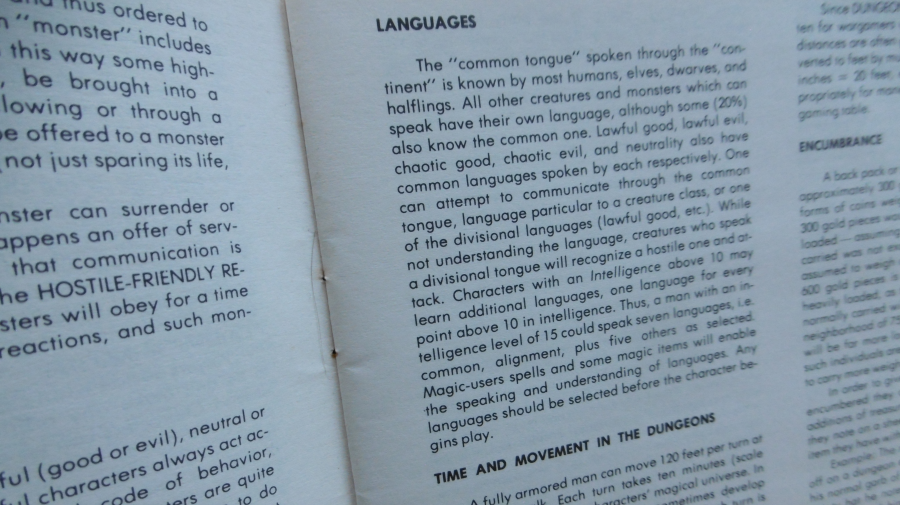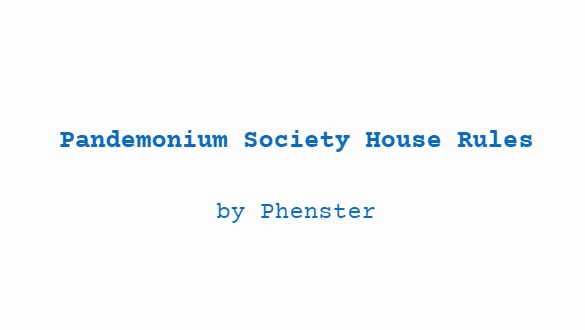Dungeoneering
In his “Dispatch from the Campaign Desk” in L’avant garde #74 (August 1985), editor Dave writes: “From the Pandemonium Society, we get some new twists on old rules and an armored personnel carrier for your fantasy wargame campaigns!”
Dungeoneering
These are some rules we've been using for a long time, but we haven't bothered to write them down yet. Plus a couple monsters from Basel's campaign.
Seeing in the Dungeon
Hazard doesn't go in for infravision. He says dwarves and elves and most underground dwellers can just see 60 feet in the dark. I like the logic of heat-seeing vision and so does Basel. I think it's just too complicated though. Basel uses it in his campaign, but he usually isn't real strict about it.
Forcing Doors Open
We used to play it where, if you didn't force a door open on the first try, you had to roll again and again to get it open or just give up. That was boring and pointless. Now we play it where, if you fail with less than a 6, it means the door is still between you and whatever is in the room. You can get it open pretty easily (without having to roll again), but you can't see what's on the other side, and anything there, in fact anything within earshot, knows someone's at the door and trying to get through. If you get a 6 (after adjustment for high strength), then the door doesn't budge. It's still stuck and you just can't open it, but somebody stronger than you can try. Or you could use an axe.
Finding Traps
Anyone can search for signs of a trap. We have to be specific about where we're looking. But if there's a trap that isn't concealed somehow, we find it without rolling for it. We have to be careful not to set off the trap while we're looking for it. Some traps, like a poison needle in a lock, we just can't see. A thief can detect traps like that with the same chance as he can remove it.
Magic Items
Magic swords get a bonus to the ATTACK roll AND they do bonus magic DAMAGE, same as the attack bonus, just like other magic weapons. Some (20%) magic swords give off light in a 10-foot radius.
War hammers do d6 damage. You can throw one up to 30' (same ranges as a hand-hurled axe). A Dwarven War Hammer is a +3 magic weapon. Dwarves can throw one twice as far with no penalty for long range, and it will boomerang back to the dwarf if it misses. If it hits, it does an extra dice of damage. If a dwarf hits a giant with a thrown Dwarven War Hammer, it gets two extra dice, 3d6+3 damage.
You can use a battle axe with only one hand and do d6+1 damage. If you use both hands, you get d6+2.
Rings of Armor: These rings (of plate mail, chain mail, and leather) give the wearer an armor class equal to their armor type with a magic bonus. So a ring of plate mail +1 gives AC 2, chain mail +2 gives AC 3. The magic bonus is also added to saving throws. If you're already wearing better armor, your AC isn't improved, but you still get the bonus to saves.
Equipment
Caltrops: You can throw caltrops on the floor of the dungeon to make monsters think twice about following you. One bag of caltrops will cover a 10-foot-square area. When a monster (or anyone really) walks through the caltrops, they have to slow down to half their exploring move rate or half combat speed (in combat). Any faster than that they might step on a caltrop (50% chance): take 1 point of damage and stop running immediately, moving at half speed until the damage is healed. You can toss caltrops up to 10', but the chance of stepping on one goes down to 30%. A bag of caltrops costs 1 g.p.
Salt: Throwing salt on zombies makes them dry up and wither. When we hit with a handful of salt, it does 1-8 damage. One bag of salt with a dozen handfuls costs 1 g.p.
Dungeon Boomtowns
We usually come out of the dungeon with some treasure. Sometimes we don't find anything, and sometimes we get a LOT of treasure! There are other adventurers bringing up treasure too, and all that money goes into the local economy and causes inflation, which means the price of stuff goes up.
The Boomtown rule says that the price of stuff goes up when a lot of treasure comes out of the dungeon and into the town. It's like a gold rush, but this is all kinds of treasure--not just gold--and it pours into base town like a river.
It sounds complicated, but Hazard makes it easy by tying inflation to the level of our PCs, because most of our XP comes from treasure. The price of everything doubles when the highest level PC gets to 4th level. It doubles again at 8th, 12th, etc. Everything means everything: from ale at the tavern to guild fees and hireling rates.
Monsters from KING OF WANDS
Cargolith: Move 60 feet/turn, Hit Dice 8-16, Armor Class 2, Treasure Type A (10%), Alignment Neutral, Attacks 1, Damage 3-36 (stomp). When resting, this creature looks like a small rocky hill, sometimes with a low natural wall surrounding the top. It can rest a long time, so grass or small trees might grow out of cracks. If disturbed, by walking on it, say, or taking a break inside the walls, the cargolith will stand on eight feet and start going in a random direction. There is a 50% chance that a ceiling of porous rock will form over the walls to close in whatever (and whoever) is within the walls.
Cargoliths have animal intelligence and can be trained to carry personnel, equipment and treasure. They can carry 1 man or 2,000 coins weight per HD. Enough air comes through the ceiling rock for breathing creatures.
Cargoliths consume small rocks and prefer river pebbles, so they are difficult to control within 100 yards of a river. They come from the elemental plane of earth. They are too big to go into most dungeons.
Enormous Spider: Move 90 feet/turn, Hit Dice 6+6, Armor Class 2, Treasure Type E, Alignment Lawful Evil, Attacks 1, Damage 4-16 (bite with strong poison, -1 to save vs. poison). These spiders are not web users, but they use sticky spider silk to build elaborate nests that look like fortresses from anything they can carry. Enormous spiders are intelligent. We know of at least one that can cast spells!


